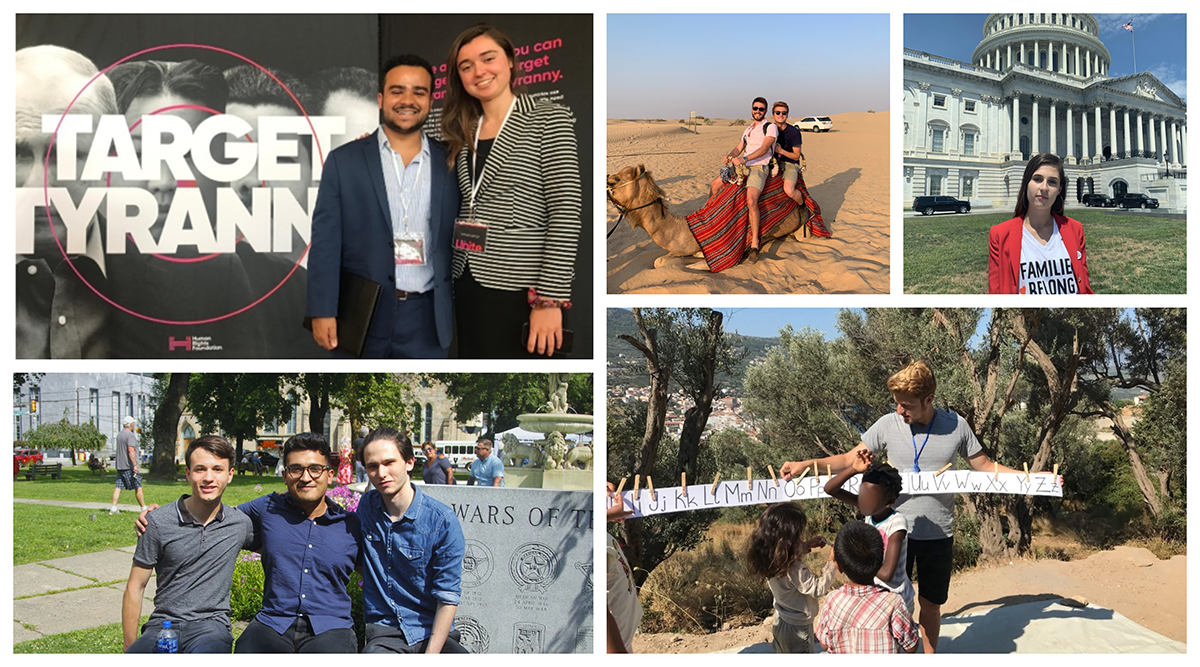Student Spotlight: 2019 Summer Projects, Internships and Research

Students are encouraged to engage in experiential education by conducting original, policy-relevant research, developing innovative projects, and participating in a broad range of internships. These opportunities allow for the application of theory to practice and lead to a better understanding of the global community.
This summer, the IGL funded 34 undergraduate and graduate students to participate in internships, conduct research, and work on projects in 13 countries. The internships ranged from the Immigration Hub with alumna Kerri Talbot in Washington, DC to Endeavor in Dubai to the United Nations Institute for Training and Research in Geneva. The research included studying the possibility of an East African Federation in Kenya to the maritime industry in Greece. Projects took students from doing narrative storytelling on the deindustrialization and rebuilding of cities such as Johnstown, PA to working with PHASE Nepal on the feasibility of health initiatives in Nepal to installing digital libraries in Ecuador.
Four students were selected as Oslo Scholars, interning with human rights fellows from Boston to Belgrade, with two working with organizations that teach and spread non-violence organizing techniques.
Three students travelled to Greece to volunteer with NGOs helping the migrants, refugees and asylum seekers on the country’s islands. Two went to Samos to work with Samos volunteers, and one to Lesvos to work with One Happy Family Community Centre (OHF). Two of the students participated in last year’s EPIIC class on migration. In her blog post, Isabel Rosenbaum (EPIIC’19, A’21) wrote:
“A few months ago, at the end of an EPIIC class, we watched 4.1 Miles, a short documentary about a Greek coast guard captain working off the coast of Lesvos, a Greek island 4.1miles from Turkey. Over the past years, hundreds of thousands of refugees have crossed this stretch of the Mediterranean in often dangerously overcrowded, ill-maintained boasts in order to reach Europe. After watching 4.1 Miles in class, many of us discussed the impact of seeing footage from the journey itself, rather than just reading about political theories and EU border policy. I thought of the film when I landed on Lesvos and could see lights on the Turkish coast from the airport, and since then, awareness of this 4.1-mile stretch has become part of my everyday life.
“The multifaceted nature of the sea as both a beautiful sight and cruel border is felt at OHF and in Lesvos in general. OHF is north of Mytilene, the capital of Lesvos, on a hill just up from the coast. Every evening I teach English to the helpers (refugee volunteers) after OHF closes, in a breezy spot with a lovely, sweeping view of the sea. Right next to the Kara Tepe camp and a few kilometers from the Moria camp, OHF is also just south of where seven migrants drowned right off the Greek coast a couple of weeks ago. Mytilene is centered around a port, where both old-school fishing boats and armored coast guard and border patrol ships constantly sit. I have sat next to new co-workers and friends as they tell me about their journey crossing that 4.1 miles, as we sit on the beach looking at Turkey after swimming in the same ocean. The presence of the sea provides a constant visual reminder of the journey taken to get here. While I learn from and become closer to people at OHF going through the asylum process, that 4.1 miles will always hold drastically different meanings for us. I can listen and try to understand people’s experiences to the best of my ability, but by the power given to me by my place of birth/passport that 4.1 miles is not a life-threatening border, but an easy 15-euro ferry ride away.”
